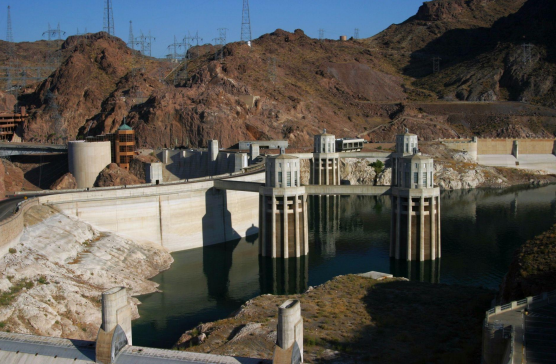This has provided businesses the time and R&D resources to discover new energy sources like tidal energy… and enable better application of their existing infrastructures. By applying AI in data science, complicated data has become easier to manage in existing energy-producing power projects.
1 . Energy Production and Scheduling Optimization
Construction of offshore wind farm projects frequently experiences cost and schedule overruns. This can be partially explained by scheduling hazards, resource and product constraints, and weather delays. Platform installation, fishing and environmental limits, government and local authority rules, and other factors all add to the problem’s complexity. Finding reliable project planning and scheduling models that take into account these interdependent elements and related hazards to offshore wind farm developments is therefore crucial. For instance, an AI-based solution allowed operators to optimize energy production while anticipating breakdowns of wind turbine blades, generators, and gearboxes. Cloud-based platforms give offshore operators access to cutting-edge analytics tools with AI algorithms that analyze incoming data for anomalies and eventually warn of impending equipment problems.
2. Asset Monitoring and Upkeep/Digital Twins
One of the most important areas is where digital twin (DT) technology may play a significant role in asset management, including its monitoring and maintenance, project planning, and lifecycle management. In this situation, Digital Twins help Energy & utility organizations deal with problems like production imbalances, abrupt changes in the state of the world economy like the COVID-19 pandemic, and dependability problems with equipment. Energy & Utility organizations require systems with real-time visibility and flexibility given by digital twins technology, almost like scenario planning for machines in the digital era, to be responsive in these busy and rather chaotic times.
3. Detecting flaws
Finding questionable pipes, wiring, machinery, or flaws in processes that are susceptible to faults is one of the difficulties Energy & Utilities firms face. Defects discovered at the end of the energy production chain from subpar wind turbines result in significant losses for energy businesses, turbine owners, turbine manufacturers, and financial resources. To this purpose, AI can support the verification of product quality and offer an in-depth understanding of errors in analytics. When compared to the basic processes, AI-powered defect detection systems are incredibly inexpensive and cost-effective. Deep learning-based pattern recognition enables video feeds captured by cameras to sound an alarm if a worker is not properly attired for the set of operations. Additionally, the equipment’s health status is alerted to the operators using predictive analytics, allowing proactive measures to avert a disaster.
4. cybersecurity fueled by AI
Security breaches have affected numerous Energy & Utility – Oil & Gas firms. According to PwC’s Global State of Information Security Survey, 42% of energy companies acknowledged falling victim to phishing scams. The shocking hack of Ukraine’s power grid in 2016 serves as a sobering reminder of the dangers facing the European Power Market at the time and their lack of cybersecurity. Artificial intelligence technologies are now required to encrypt the operating system into their enterprise’s security due to the rise in physical and cyberattacks and the associated security spending. Video cameras serve as sensors that aid in continuously assessing the security risks in the utility sector. The software enables the utilities to be secured to every endpoint when coupled.
5. Occupational Safety
The use of heavy equipment in offshore energy market operations puts workers at risk. Future trends, problems, and scenarios highlight how various deep learning-based IT solutions assist safety officials in identifying violations of safety regulations. Personnel dangers arise from the use of heavy machinery and rotational equipment at energy-generating plants and wind turbines.
6. Emissions Monitoring
Net-zero emissions goals have already been established by several Energy firms. Numerous businesses are attempting to decarbonize their operations and value chains despite the economic difficulties. According to BCG estimates, by 2030, the potential value created through increased revenues and cost savings as a result of the application of AI to corporate sustainability ranges from $1.3 trillion to $2.6 trillion. In order to better manage fugitive emissions of greenhouse gases from pipelines and energy equipment, energy and utility producers are now implementing AI software.
7. Logistics & Logistics Network Optimizations
Certain energy-related industries, such as the oil and gas sector, have complicated supply chains incorporating decision nodes like environmental recycling businesses and LPG gas producers and distributors… Complexity can be found in the processes of procurement, purchase price, fuel refinery activities, gantry operations, and transportation to the retail sale of finished goods. AI assists in this company’s operations team’s coordination with the warehouse to guarantee the availability of essential supplies like refill tanks. AI can assist with effective planning and execution, selecting the best route, and other tasks in these LPG enterprises. As opposed to this, it aids refiners in planning the best blending, predicting demand, projecting prices, and improving customer relations, all of which are common in the downstream oil and gas industry. To put it briefly, AI helps Energy & utility companies estimate the market.












